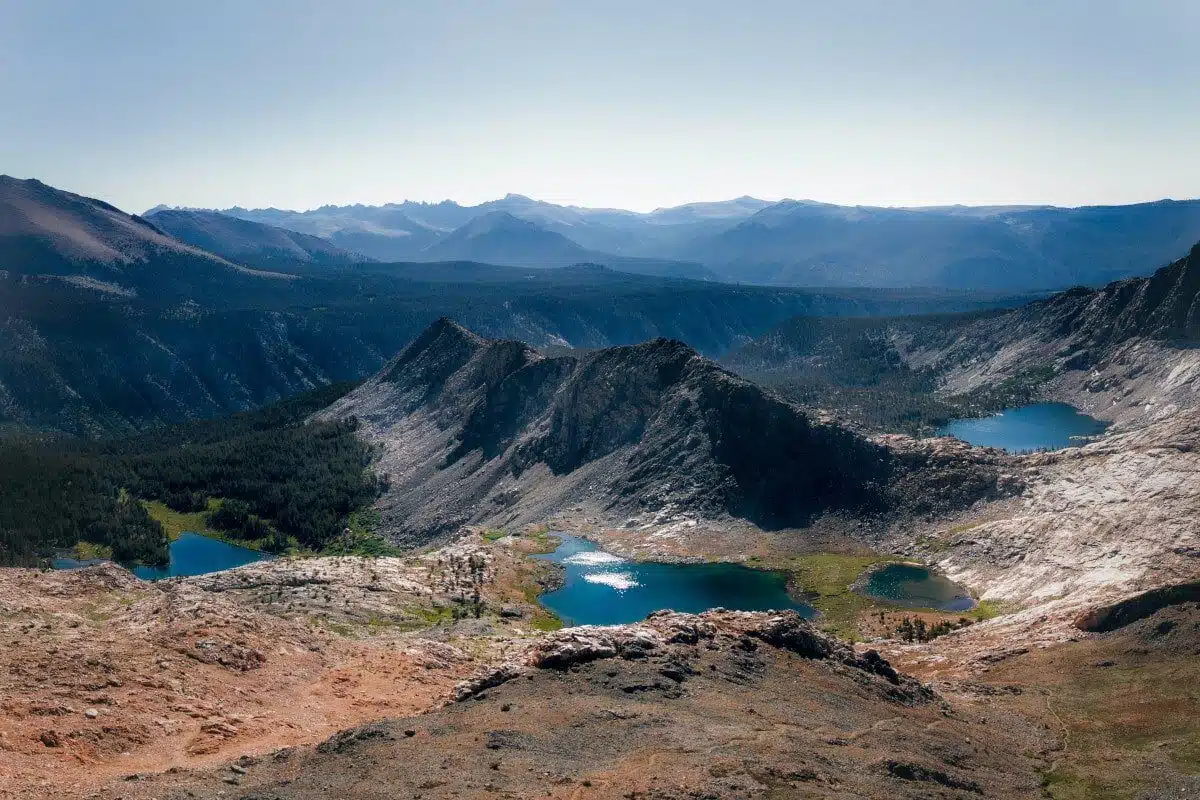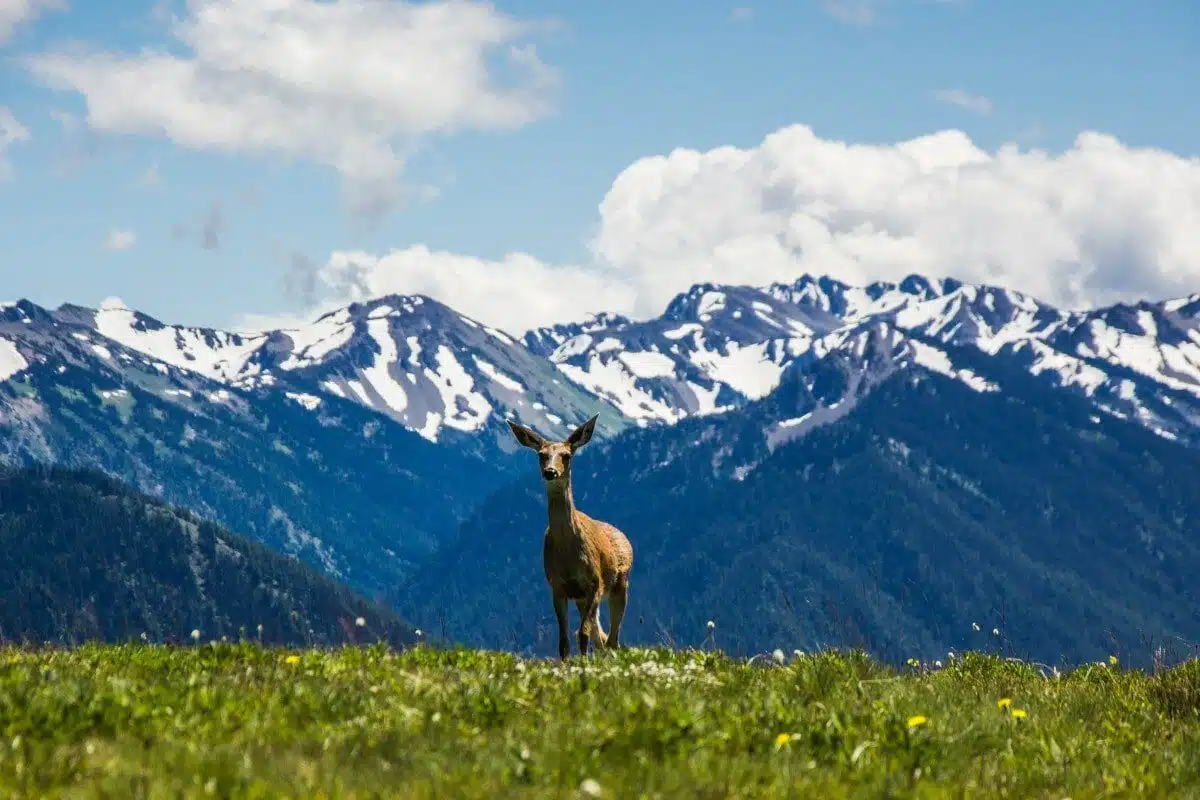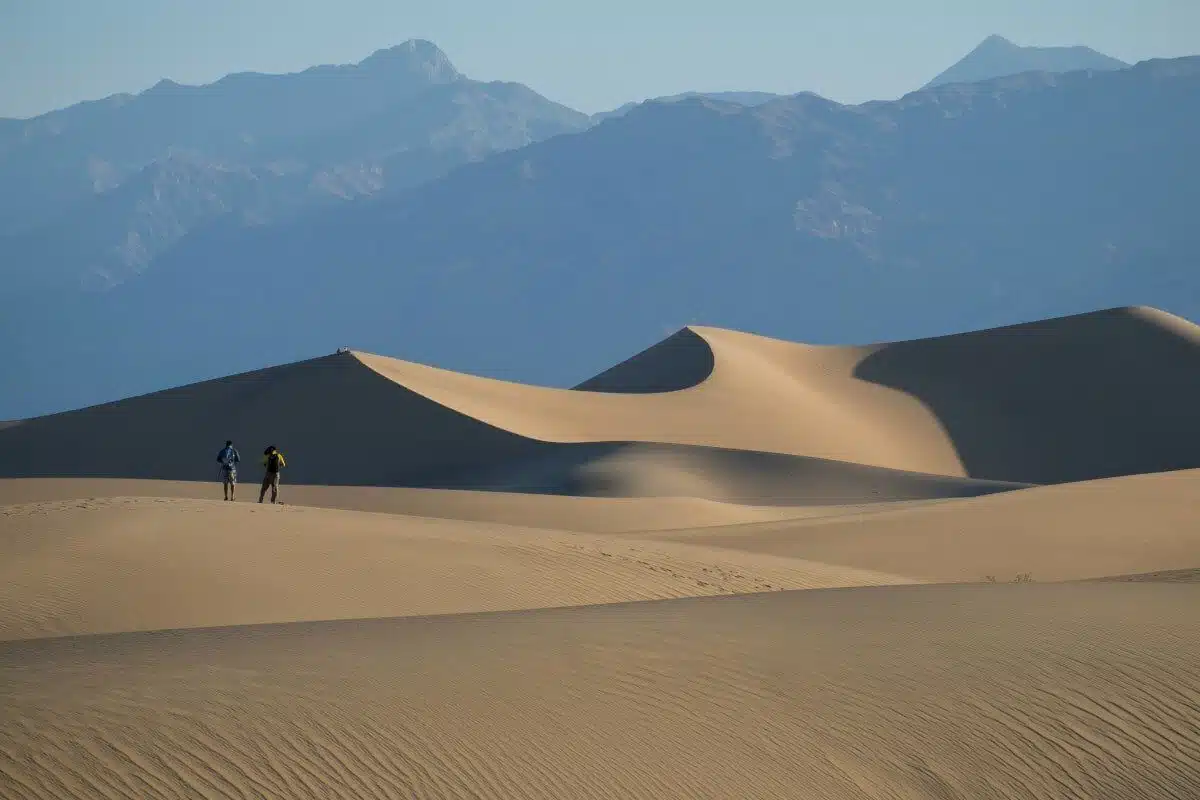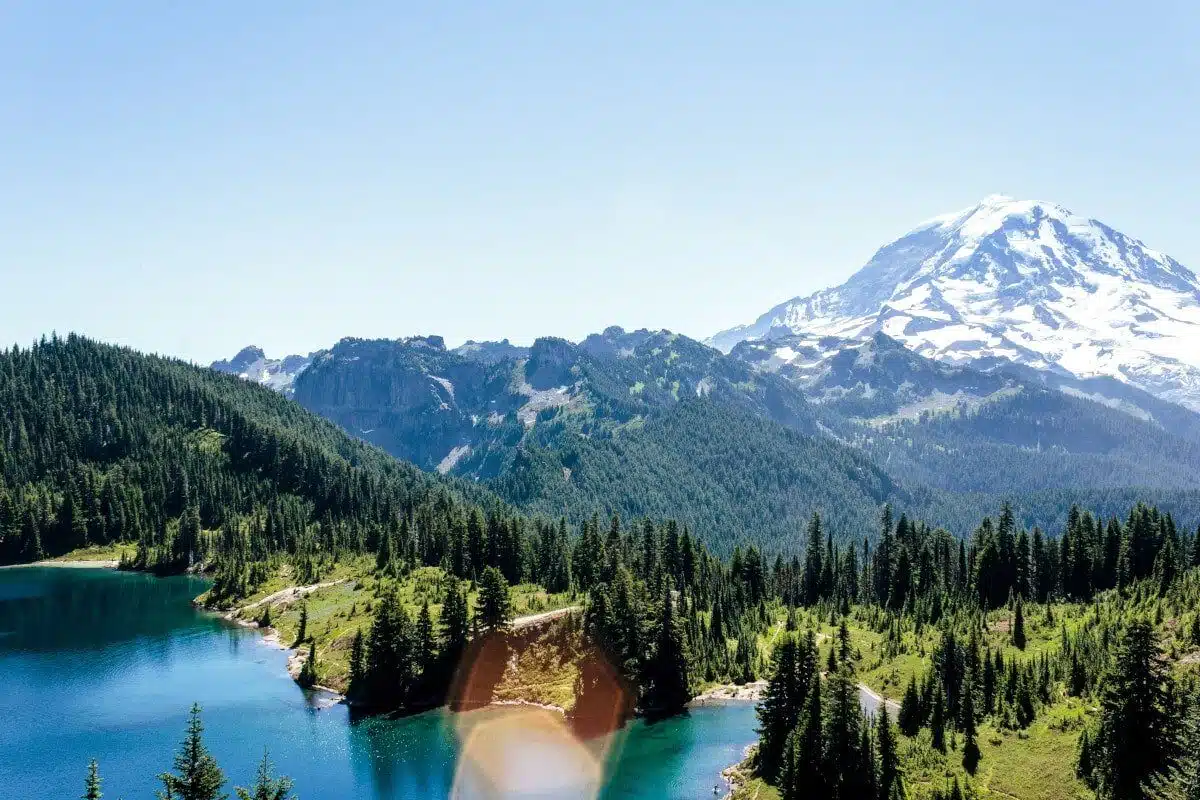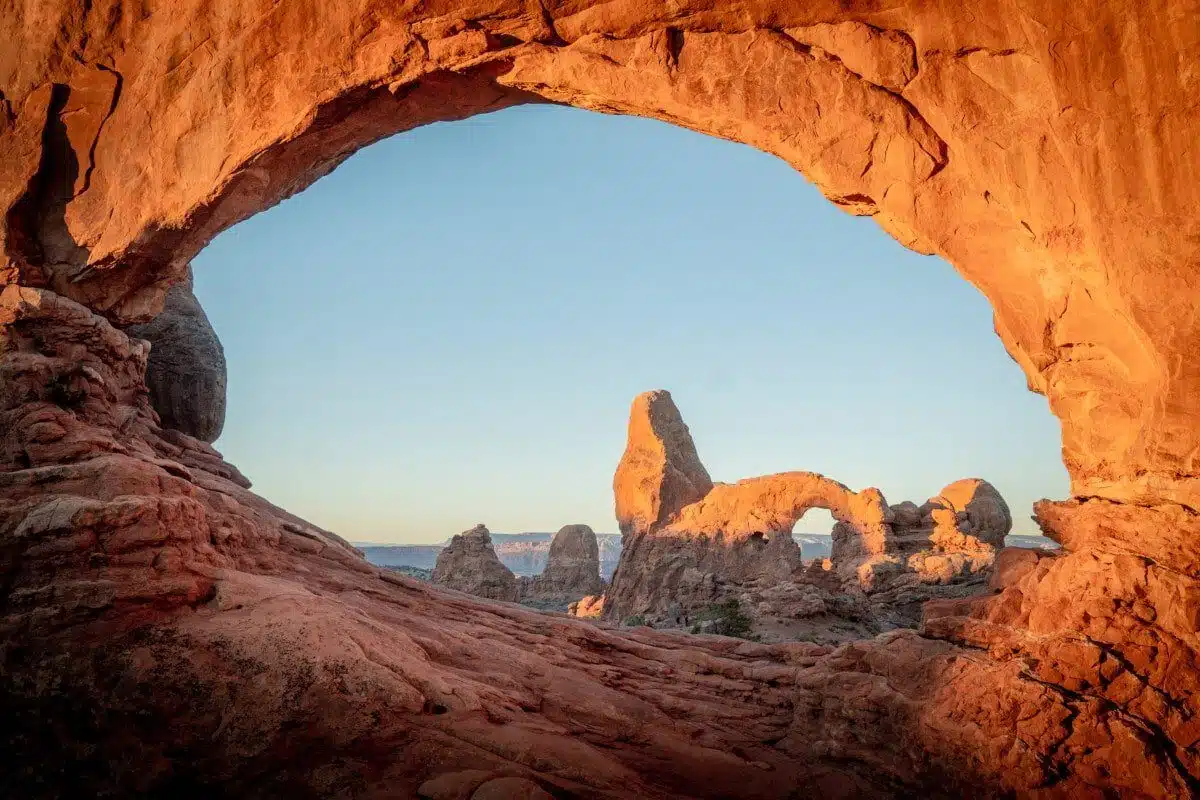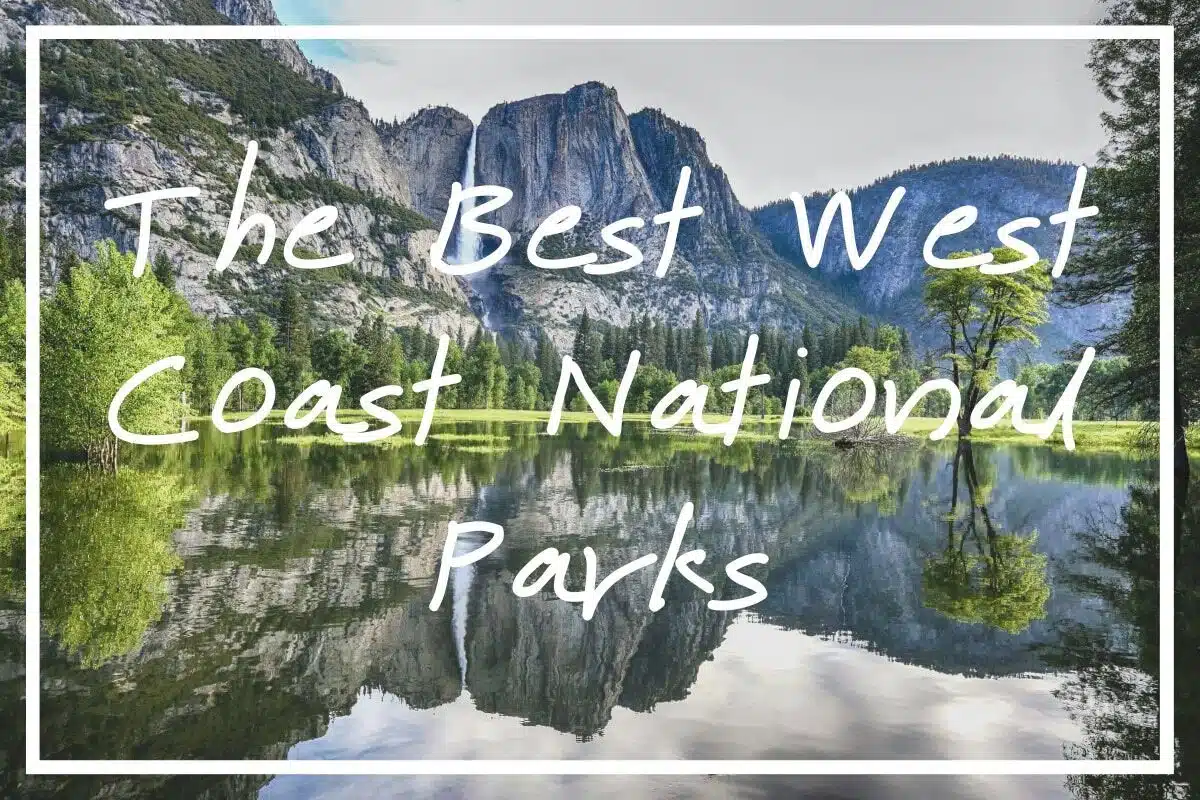
Want to find out about the best West Coast parks? I hope this post helps!
Did you know there are a whopping 423 national park sites in the United States?
That includes the 63 official “national parks” as well as hundreds of national monuments, memorials, historical sites, and nature preserves!
Ever since I visited Yosemite as a child, I’ve been fascinated by the national parks in America.
And I’ve heard that those on the west coast are particularly special, which is why I’ve created this “bucket list” of west coast parks in America!
Want to learn more about the best national parks in the west?
Keep reading for a deep dive into 11 of America’s best west coast national parks and why they belong on your travel bucket list!
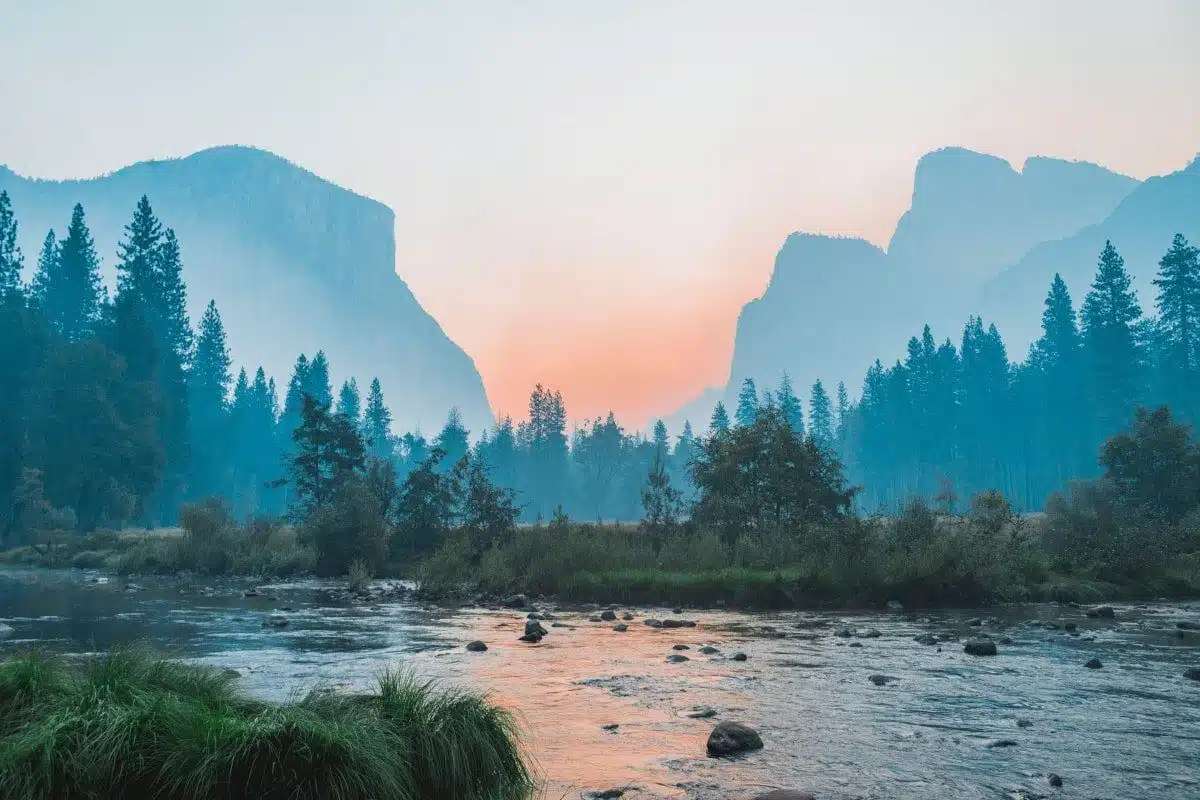
First up, we have one of the most popular West Coast parks out there: Yosemite…
Want to visit a West Coast Park? You might also like these posts…
- 15 Awesome East Coast National Parks
- 40 Fun Facts about the UK
- 30 Fun Facts about Mexico
- 20 Amazing Destinations with Clear Water
- 40 Different Types of Tourism
- The Best Jobs for Adventurers
- 75 Essential Things to Pack for Travel
1. Yosemite National Park
As an ode to my childhood, let’s start our journey in Yosemite National Park.
It’s one of the most famous (and most visited) national parks in America — and for good reason!
Located in central California, Yosemite encompasses 2,700 square miles (almost 7,000 square kilometres) of diverse wilderness.
This includes huge granite mountains, towering sequoia trees, larger-than-life waterfalls, and verdant meadows.
Highlights include Yosemite Valley, which offers spectacular views of El Capitan and Half Dome, some of the mountains made famous through Ansel Adams’ iconic photography.
Hike the Cloud’s Rest, Taft Point, or Four Miles’ Trails for once-in-a-lifetime views.
Or, if you’re feeling especially brave, get a permit to hike the cable trail along Half Dome. This is also an amazing park for rock climbing and backcountry enthusiasts!
Yosemite is open to visitors year-round, but spring and autumn offer the best weather with fewer crowds than in the summer months.
The closest major cities are San Francisco and Sacramento, each about three hours away.
No list of the best National Parks on the west coast would be complete without Yellowstone.
2. Yellowstone National Park
Although it’s not technically on the “west coast,” no list of national parks in the west would be complete without Yellowstone National Park.
Located mostly in the state of Wyoming (with small portions in neighbouring Idaho and Montana), Yellowstone is the oldest national park, not just in the US, but the world!
President Ulysses S. Grant designated the 2.2-million acres of geothermal wonders a protected area in 1872, setting the precedent for other nations to do the same.
More than half of all hydrothermal features on the planet lie within the borders of Yellowstone Park.
This includes geysers, mud pots, hot springs, and travertine terraces. In fact, one of the earth’s largest (and still active) supervolcanoes sits just beneath Yellowstone.
Highlights include the “Old Faithful” geyser, Grand Prismatic Spring, and the Lamar Valley.
Wildlife enthusiasts will have a field day here since Yellowstone contains the greatest concentration of wildlife in the lower 48 states.
Bears, elk, wolves, moose, and eagles abound here, along with huge herds of bison that have roamed here since prehistoric times.
If you’re lucky, you’ll get caught in a “bison jam” and watch in awe (from the safety of your vehicle) as a herd of enormous bison cross the road in front of you!
Yellowstone is open all year to visitors and is the busiest (and hottest) in the summer months.
To avoid the crowds and experience an epic snowy landscape, consider visiting in the wintertime.
You can easily combine it with a visit to nearby Grand Teton National Park for some unforgettable mountain scenery (and some of the best skiing/snowboarding in the US).
Important note:
Yellowstone’s location is quite remote, so expect a full day’s drive from the nearest big cities of Denver, Salt Lake City, or Billings.
The Grand Canyon is another all-popular and infamous West Coast National Park.
3. Grand Canyon National Park
Carved over millions of years by wind and water erosion, there’s no sight on earth quite like the Grand Canyon.
Located in the northern part of Arizona, this is one west coast park you simply cannot miss.
Imagine a high desert canyon 278 miles (447 km) long with an average depth of one vertical mile (1.6 km).
The north and south rims of the canyon lie between 7,000-8,000 feet (2,100-2,400 km) in elevation.
It’s so big that it would take you four hours to drive from the south rim to the north rim!
Hiking, horseback riding, camping, and white water rafting are the main attractions at this glorious park.
You can take an iconic mule ride to the bottom of the canyon and spend the night at Phantom Ranch.
It’s also the ancestral homeland of 11 different tribes, so this is a perfect place to learn more about Native American culture and history.
Arizona is hot during the summer months, so your best bet is to visit the Grand Canyon in the spring or autumn.
It’s open (and far less crowded) during the wintertime too if you’re up for the cooler weather. The south rim of the canyon lies a few hours from the nearest big cities of Phoenix and Las Vegas.
Next up, two separate National Parks in the West: Sequoia and Kings.
4. Sequoia & Kings Canyon National Parks
Although technically two different national parks, Sequoia and Kings Canyon are so close together that you can easily combine them into one visit.
Located in south-central California, just a few hours south of Yosemite, these parks are seriously worthy of your consideration.
Sequoia is home to vast forests of sequoia trees — the largest tree species on earth.
Just how big are they?
The largest tree in the world, aptly named “General Sherman,” is 274 feet (83.5 m) tall with a ground circumference of 102 feet (31 m).
To put that into perspective, it would take you and 20 of your closest friends to spread your arms, join hands, and “hug” this massive tree!
Meanwhile, Kings Canyon features a landscape very similar to Yosemite, with soaring mountains, deep valleys, and majestic forests.
Its dramatic canyon walls rise over 8,000 feet (2,500 m), making it deeper in some parts than the Grand Canyon!
Some areas of these parks close during the winter months, so spring or autumn is your best time to visit.
The parks are almost equidistant (about four hours) from the nearest big cities of Los Angeles or San Francisco.
If you want diversity, then Olympic is undoubtedly one of the best parks in the west.
5. Olympic National Park
Finally, we have a west coast national park that’s actually located on the coast.
If you’re looking for incredible diversity, Washington state’s Olympic National Park offers the biggest bang for your buck.
Located in the northwest corner of Washington just across from the Canadian border and Vancouver Island, Olympic National Park contains three distinct ecosystems:
Pacific Ocean coastline, glaciated mountain ranges, and the largest temperate rainforest in the US.
In fact, the region receives up to 200 inches (500 cm) of rainfall every year!
Head down to the coast and you’re sure to see migrating whales and dolphins, along with resident seals, sea lions, crabs, salmon, and otters.
Inland, you can spot eagles, bears, mink, marmots, and mountain lions.
You’ll also marvel at the old-growth trees in the rainforest, sure to be some of the largest and greenest forests you’ve ever seen.
Hiking is one of the most popular activities in Olympic National Park, with a well-maintained system of trails that span over 600 miles (1,000 km).
There are ample opportunities for boating, kayaking, rock climbing, fishing, and snowshoeing too.
The park is wettest in the late autumn and winter months, so the best time to visit is during the spring and summertime.
Unlike many of the other west coast national parks, Olympic Park is quite easy to reach — the major city/airport of Seattle is only two hours away.
Few National parks on the west coast are as intimidating as Death Valley.
6. Death Valley National Park
From one of the wettest places in the US (Olympic National Park), let’s drop down to the other extreme in Death Valley National Park.
Located in California’s southern interior and sharing a border with Nevada, this is one of the most unique ecosystems on the planet.
To be sure, the climate of Death Valley is intense.
It holds the long-reigning world record for the hottest place on earth (134 degrees Fahrenheit or 57 degrees Celcius). It’s also the driest place in North America as well as the lowest point on the entire continent at 282 feet (61 m) below sea level.
Despite the extreme climate, Death Valley is far from a desolate landscape.
The desert bursts to life in the springtime with endless fields of wildflowers, while scattered oases teem with tiny fish that manage to survive in water that averages 98 degrees Fahrenheit (36 degrees Celcius).
Meanwhile, the mountains surrounding Death Valley are often snowcapped, while the valley floors are covered with a white substance that appears to be snow (but is actually salt)!
A must-see attraction on your visit is “Racetrack Playa,” which is home to one of the region’s most enduring mysteries.
In this broad dry lake, huge boulders magically move across the sand — often hundreds of meters — leaving tell-tale trails in their wake.
Scientists have been studying this phenomenon for decades but still can’t determine which force of nature makes these rocks move.
If you want to explore this one-of-a-kind park for yourself, you can reach it within two hours from Las Vegas or four hours from Los Angeles.
The summer months are dangerously hot (especially if you’re not used to the heat), so it’s best to plan your visit during the autumn, winter, or springtime.
Bonus tip:
Yosemite National Park, Sequoia/Kings Canyon National Parks, and Death Valley National Park nearly border each other, so you can easily combine these three California parks into one road trip.
Mount Rainier’s immense natural beauty isn’t the only reason it deserves a spot on this list of West Coast National Parks.
7. Mount Rainier National Park
Have you ever wanted to see an active volcano?
You don’t have to travel to a far-flung Pacific island to achieve that goal. Instead, book a trip to Washington state and explore the beautiful Mount Rainier National Park.
Mount Rainier is not only an active volcano, but it’s also the most glaciated peak in the US (outside of Alaska).
The peak towers mightily at 14,410 feet (4,392 m) above sea level.
On a clear day, you can see Mount Rainier from Victoria, British Colombia — that’s in Canada, by the way — or parts of neighbouring Oregon, which is over 300 miles (500 km) away!
In case you were wondering, Mount Rainier hasn’t erupted in over 1,000 years, so you don’t have to worry about an imminent eruption while you’re hiking.
The enormous peak is snowcapped year-round and marks the headwaters of five different west coast rivers.
Due to its high altitude, much of the park is closed to visitors during the winter season. Late spring to early fall is the best time to explore Mount Rainier National Park.
And, like Olympic National Park, it’s located only two hours from Seattle, which means you could combine both parks into one convenient road trip.
Fun fact:
Scientists have been exploring Mount Rainier’s ice caves as ongoing research for future space missions to Mars.
If you’d like to check out an ice cave during your visit, you can sign up for a tour of the Paradise Glacier ice caves.
Crater Lakes is one of the best National Parks in the West that isn’t in either California or Washington!
8. Crater Lake National Park
California boasts nine national parks and Washington has three, so these west coast states rightfully get a lot of attention.
But let’s not overlook the other west coast state — Oregon — and its national park of Crater Lake, which is well worth a place on your itinerary.
Crater Lake National Park is home to the deepest lake (with some of the purest water) in North America.
In fact, the lake’s nearly 2,000 feet (609 m) deep in some parts!
What really makes Crater Lake unique, however, is its location.
It’s nestled in the caldera remains of an ancient volcano, Mount Mazuma, which erupted over 8,000 years ago. There are no rivers or streams that feed into Crater Lake, which means it gets all its water entirely from rain and snowfall!
The best way to explore Crater Lake is by driving the 33-mile (53 km) rim road around the lake.
Expect to be astounded by the deep blue colour of the lake and the fact that you can see over 100 feet (33 m) below the surface.
If time allows, you can also take a ferry ride to Wizard Island and enjoy a swim in the lake.
Like other high-altitude national parks on the west coast, much of the park closes during the winter months.
Plan your visit for the late spring or early autumn if you want to beat the summer crowds.
Crater Lake is fairly isolated, lying about five hour’s drive from Portland, Oregon, or six hours from Sacramento, California.
If you’re doing a west coast national parks road trip from Washington to California (or vice versa), it’s well worth stopping at Crater Lake on your way through Oregon!
Of all the best West Coast Parks in this article, Arches is definitely on my bucket list.
9. Arches National Park
You may not hear much about the western state of Utah, but it boasts an impressive five national parks (only California and Alaska have more).
If you have enough time to venture inland from the west coast, you won’t regret visiting this beautiful state and its spectacular scenery.
Arches National Park is my top pick for Utah’s national parks.
It’s safe to say that pretty much any stunning Instagram desertscape photo you’ve ever seen of red rock formations was probably captured in this area.
Arches National Park is home to more than 2,000 natural sandstone arches, carved over aeons by wind and water erosion.
This is the highest concentration of this unique rock formation anywhere on earth!
There are (quite literally) arches to explore around every corner, but the park’s most famous arches include Delicate Arch, Turret Arch, the Windows, and Double Arch.
It’s easy to explore the park via car, hiking trails, or mountain biking paths.
Are you a photography aficionado?
There are few parks more impressive to photograph than Arches. It also boasts some of the lowest light pollution levels in the US, which makes for some truly awesome night photography opportunities.
Arches National Park lies about four hours from Salt Lake City and a full day’s drive from other big cities like Las Vegas or Denver.
However, don’t let its isolated location stop you from visiting!
The park is open year-round and is equally spectacular during all four seasons.
Pro tip:
After you explore Arches, you’re well-positioned to visit Utah’s other incredible parks, such as Zion, Bryce Canyon, and Canyonlands — each showcasing jaw-dropping rock formations and desert vistas.
From here, you can also drop down into northern Arizona and tick the Grand Canyon off your west coast national park bucket list.
Joshua Tree is one of the newest National Parks in the west.
10. Joshua Tree National Park
Returning to California, let’s add one more west coast park to your travel itinerary.
Joshua Tree National Park didn’t gain its national park status until 1994, making it one of the newer parks in the US, but it more than deserves its place on our west coast national parks list.
First of all, what is a Joshua tree?
These bizarre, spiky, almost otherworldly trees look like something out of a Dr. Seuss book, but they’re in fact members of the agave family (the same type of plant we make tequila from).
Legend has it that the trees were named by the first Mormon settlers after the Biblical figure Joshua.
As you explore the national park, you’ll notice two distinct ecosystems.
The northern end of the park is the higher elevation Mojave Desert, where youll find the majority of Joshua trees.
In the lower elevations, you’ll find the Colorado desert (not to be confused with the state of Colorado), which is full of cacti and bizarre rock formations.
Located just two hours from downtown Los Angeles or 45 minutes from Palm Springs, Joshua Tree is one of the most easily accessible west coast national parks.
You could visit as a day trip if you wanted, although there’s plenty to see if you want to extend your visit.
The summer months can be brutally hot — it is the desert, after all — so it’s best to visit Joshua Tree during the late autumn, winter, or springtime.
Last but not least, we have the Petrified Forest National Park.
11. Petrified Forest National Park
I’ve saved this hidden gem for last, as it’s one of the most unique (and easily overlooked) national parks in the west.
Located in Arizona about three hours east of the Grand Canyon, it may not get as much attention as its big brother to the west, but it’s more than worthy of your consideration.
Petrified Forest National Park will make you feel like you’re on another planet.
It’s home to the aptly named Painted Desert, which stretches from horizon to horizon in a dizzying array of colours.
There are also countless petroglyphs and paleontology exhibits from ancient peoples who once called the area home.
The main draw of the park, however — as its name suggests — is the petrified wood scattered across hundreds of miles of the desert landscape.
Formed from an ancient river system that existed some 200 million years ago, these giant logs fossilised under volcanic ash and are now almost solid quartz and crystal. You won’t see anything like these colourful “fossils” anywhere else in the world!
Petrified Forest National Park lies about three hours from Albuquerque, New Mexico, or four hours from Phoenix, Arizona.
You could also make a day trip from the south rim of the Grand Canyon to explore this one-of-a-kind national park.
It’s open to visitors year-round and (bonus!) is pet-friendly, so feel free to bring Fido along for the journey.
Which West Coast Parks Will You Visit First?
After reviewing this list of American west coast parks, you’re probably eager to start exploring!
Remember: The United States is huge.
Unless you have at least a month (or preferably longer) on your hands, you won’t be able to see every west coast national park on this list.
So bookmark this article and use it as you plan your American road trip!
Choose the national parks on the west coast that you want to see most and go from there. Who knows where you’ll end or what you’ll see along the way?
Are you looking for more great travel tips and inspiration?
Check out this list of the different types of travelling!


